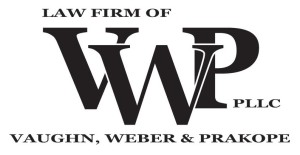Section 8 Tenant Evictions
SECTION 8 TENANT EVICTIONS
In order to evict Section 8 tenants, landlords must follow special procedures that apply uniquely to Section 8 tenancies. The process is more complicated and difficult than typical evictions, but landlords with good reasons for evicting tenants should not be discouraged.
Section 8 is a government program that subsidizes a portion of certain tenants’ rent. The program is administered by NYCHA, the New York City Housing Authority. People may qualify for Section 8 vouchers for a number of reasons. People with mental illnesses or physical disabilities, for example, may be eligible for Section 8 vouchers. Some Section 8 vouchers may be transferred, by the tenant, from residence to residence, while other vouchers remain with the rental unit. In either case, a portion of the rent will be paid by the government directly to the landlord. The tenant is only responsible for the portion of the rent that is not covered by the voucher. If the landlord seeks any part of the subsidy portion in the eviction action, then NYCHA must be joined as a party to the case.
In any Section 8 eviction, NYCHA as well as the tenant must be notified of the grounds for eviction before the landlord begins the case. Once NYCHA and the tenant are notified, the process the landlord will have to follow will depend on the grounds for eviction. If the tenant is being evicted for nonpayment of rent or holdover based on termination of a Section 8 voucher, then the landlord must send a certification stating the grounds for eviction to NYCHA and the tenant. (A “holdover” is when a landlord evicts a tenant that remains in a rental unit after the lease has expired, or because the tenant remains in the unit after violating lease terms. If the lease agreement is contingent upon the Section 8 voucher, then termination of the Section 8 voucher would give the landlord grounds for eviction. This would be a holdover based on termination of a Section 8 voucher.) The landlord can then request a certificate of non-objection from NYCHA. Section 8 tenants can only be evicted for “good cause” – such as creating an ongoing nuisance or violating the law, among other things. NYCHA must be assured that the tenant is being evicted for good cause. If NYCHA issues a certificate of non-objection, then the certification of grounds may be substituted for the allegations in the landlord’s petition. If NYCHA does not respond in a timely manner, the landlord can begin the case, but should include an allegation stating that NYCHA has not responded in the petition. NYCHA may object to the grounds for eviction in the certification. In this event, the case may still proceed, but NYCHA must be joined as a party to the case. After this, the case can proceed as a typical eviction action.
Each of these procedural requirements must occur within specified timelines, and there may always be special circumstances demanding other procedural actions. Section 8 evictions can be one of the more difficult areas of housing law. But if the grounds are there, eviction is an option.
Landlord Tenant Attorneys
If you have any questions about this, or other legal issues, please call the Law Firm of Vaughn, Weber & Prakope, PLLC at 516-858-2620 to schedule a free consultation.



Keep in Touch